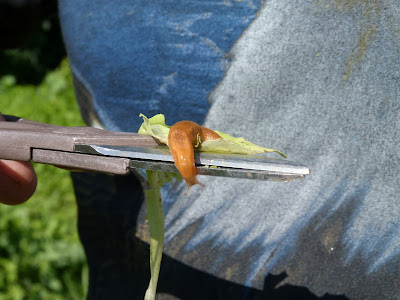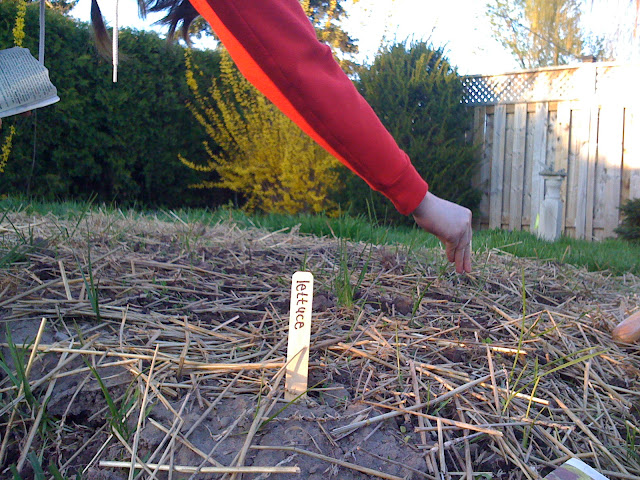The garden is beginning to take shape and almost everything is covered in greenery. We decided to poke around and have a few visitors over to the garden for the first time...
Metta SuttaThis is what should be done
By one who is skilled in goodness,
And who knows the path of peace:
Let them be able and upright,
Straightforward and gentle in speech.
Humble and not conceited,
Contented and easily satisfied.
Unburdened with duties and frugal in their ways.
Peaceful and calm, and wise and skillful,
Not proud and demanding in nature.
Let them not do the slightest thing
That the wise would later reprove.
Wishing: In gladness and in safety,
May all beings be at ease.
Whatever living beings there may be;
Whether they are weak or strong, omitting none,
The great or the mighty, medium, short or small,
The seen and the unseen,
Those living near and far away,
Those born and to-be-born,
May all beings be at ease!
Let none deceive another,
Or despise any being in any state.
Let none through anger or ill-will
Wish harm upon another.
Even as a mother protects with her life
Her child, her only child,
So with a boundless heart
Should one cherish all living beings:
Radiating kindness over the entire world
Spreading upwards to the skies,
And downwards to the depths;
Outwards and unbounded,
Freed from hatred and ill-will.
Whether standing or walking, seated or lying down
Free from drowsiness,
One should sustain this recollection.
This is said to be the sublime abiding.
By not holding to fixed views,
The pure-hearted one, having clarity of vision,
Being freed from all sense desires,
Is not born again into this world.
"Gardening is civil and social,
but it wants the vigor and freedom
of the forest and the outlaw."
-Henry David Thoreau
While we were poking around in the lettuce we found a bright yellow coloured slug (could it be a young banana slug?) and are now debating on whether or not to take some kind of action against the slimy gastropod. So far only one has been spotted but I've read they like to come out at night and they lay eggs in the soil. On a bright side they could attract some good garden predators so maybe it will be worth sacrificing some lettuce leaves. We have used the companion planting method when we could around the garden and we have marigolds planted around the lettuce to help deter pests such as slugs.
I'll take this opportunity to talk about pests. Companion planting is a method we use in our garden to avoid pest problems without using chemicals. It involves mixing gardening fact and folklore of simply growing certain plants together for their mutual benefit. As I've mentioned before we've grown White Clover as a ground cover because if you leave bare soil weeds will grow and clover adds nitrogen to the soil.
I've also mentioned before about beneficial insects in the garden. The Clover also provides refuge for the beneficial insects.
There are insects we want to attract in the garden because they hunt and eat other common garden pests. We've planted herbs and flowers amongst the vegetables in our garden to create biodiversity. It may seem like our garden looks rather "unkempt" but the purpose is to confuse the pests so that they have a harder time finding the plants they like to eat. A farmer once told me to "think of insects as the pulse of your garden" and on a hot summer afternoon you can sit and just be still and listen to the buzzes and hums that come from your garden. It's so peaceful to just observe the insects; they are working so hard along side of you.
The bird bath is for the birds and bugs. Birds are great at pest control and so they are always welcome visitors in our garden. It's great to watch them stop for drink and a quick dip !
We have also planted Dill close to the Cucumbers, Wild Strawberries, and Nasturtiums.
Speaking of companions yesterday we noticed that there is a Robin that has decided to build a nest on top of a light fixture at the edge of the house. And of course Bella who is always excited to work in the garden with us.
The Tomato plants are planted in close proximity to the Queen Anne's Lace that was already established on the outer boundary of the garden.
If you walk through the garden one of the first things you would notice is that we have Marigolds planted all throughout. Marigolds have a strong odor (as do Basil, Chives, Onions, Garlic) and they in turn confuse and repel insects.





































